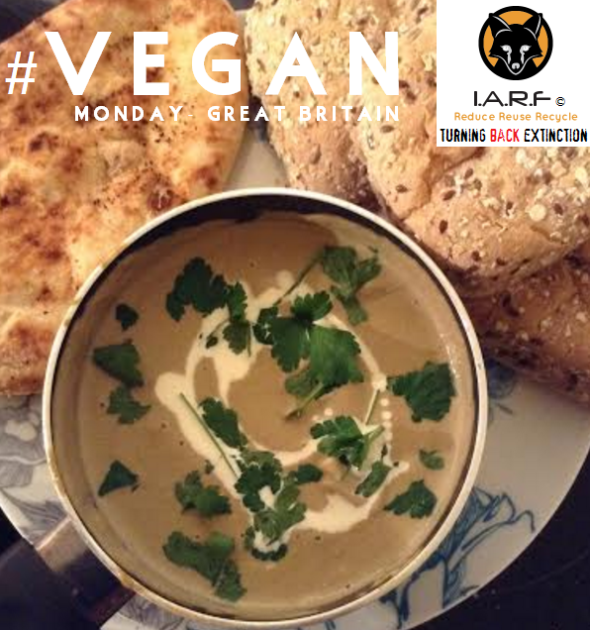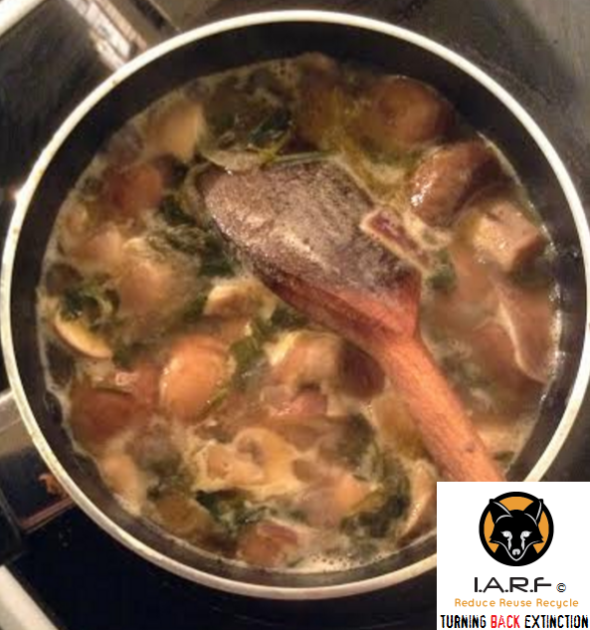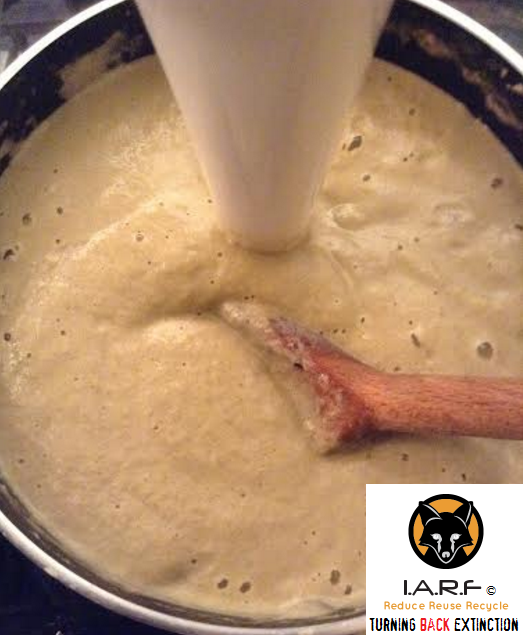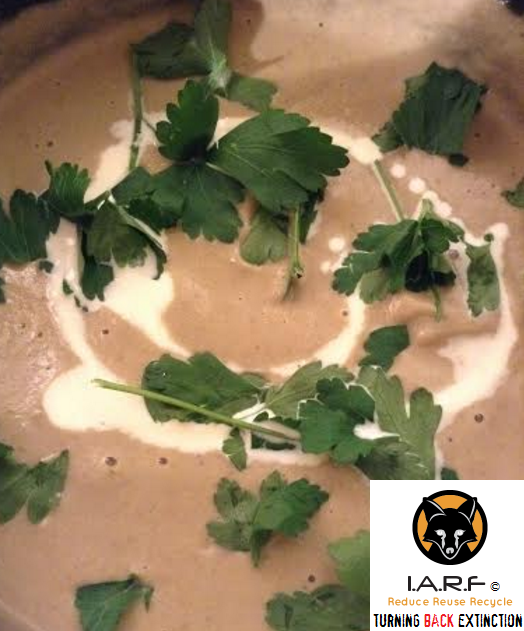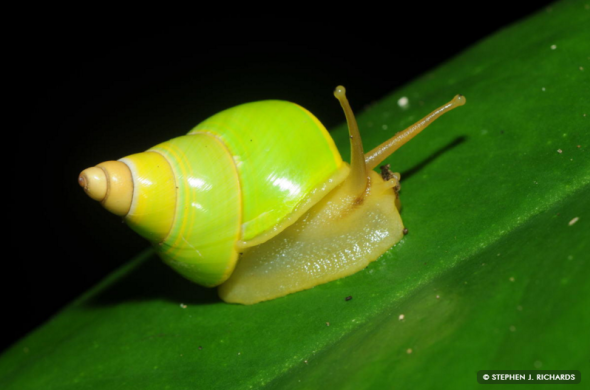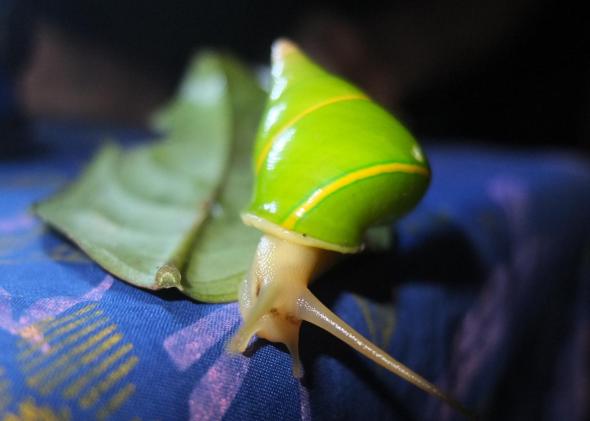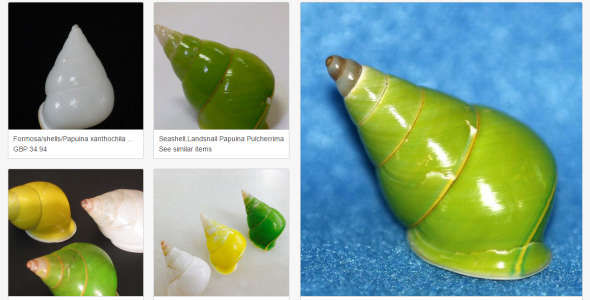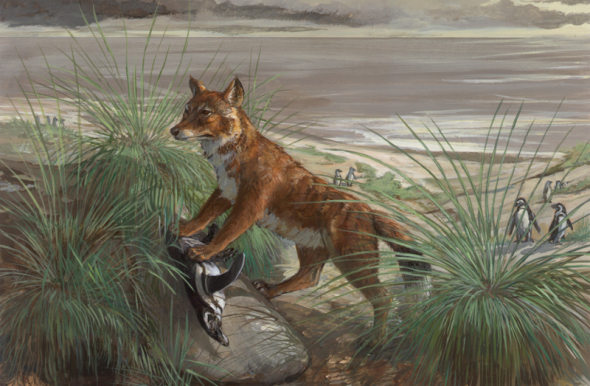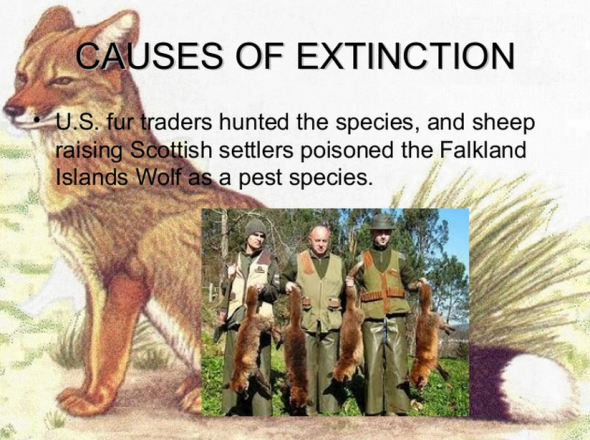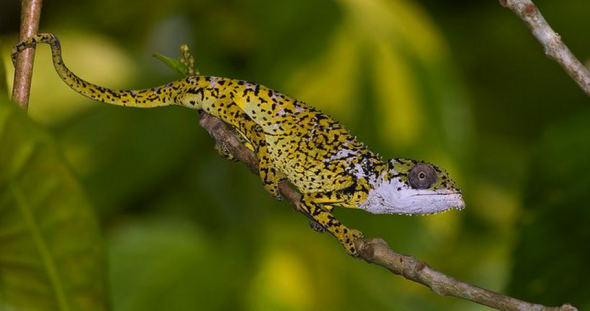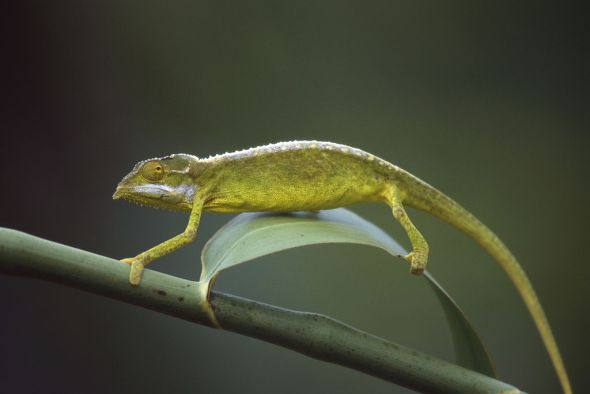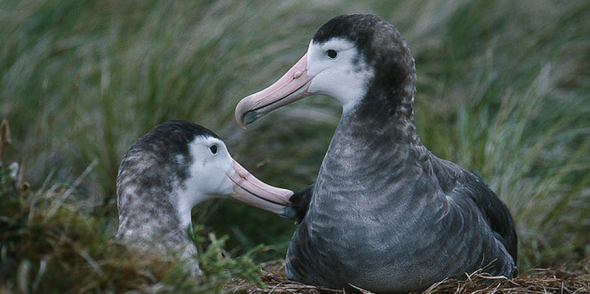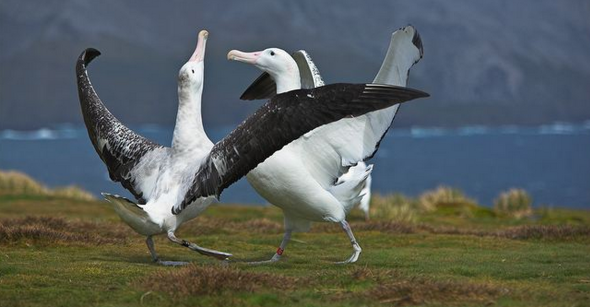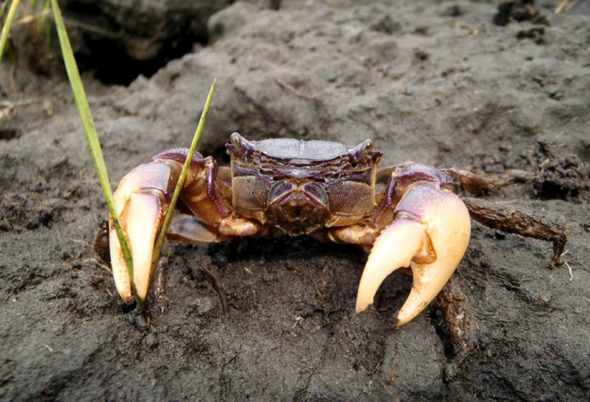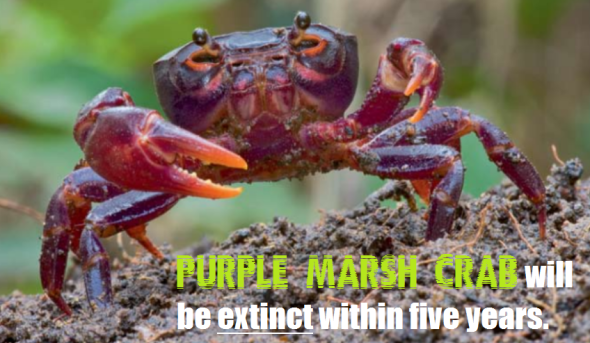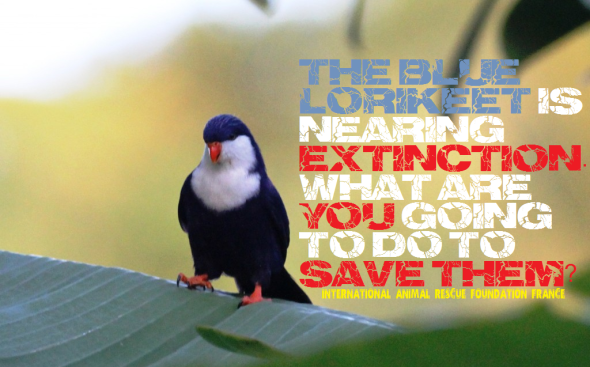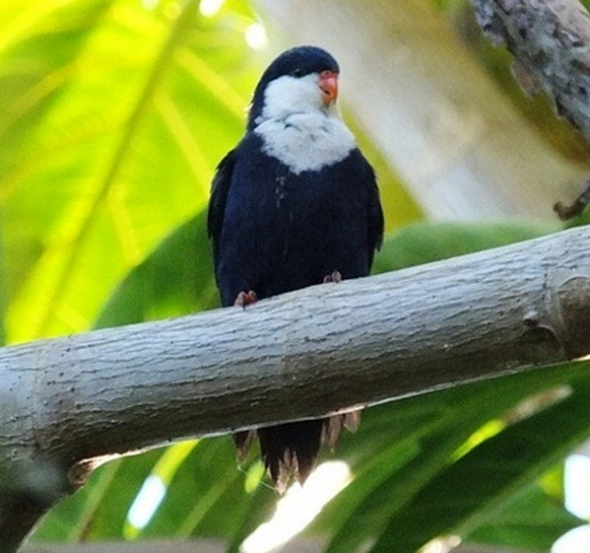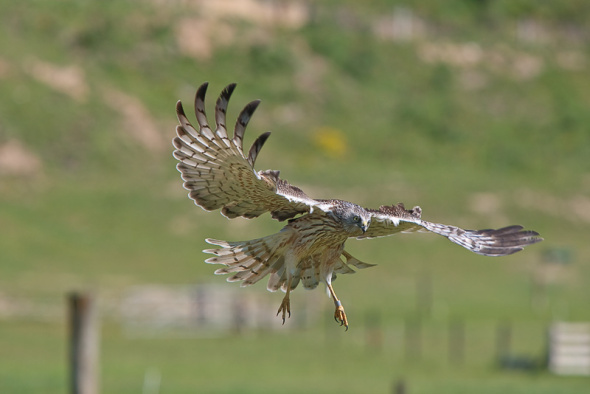ENDANGERED SPECIES MONDAY | SPOTTED SEAHORSE FACING EXTINCTION.
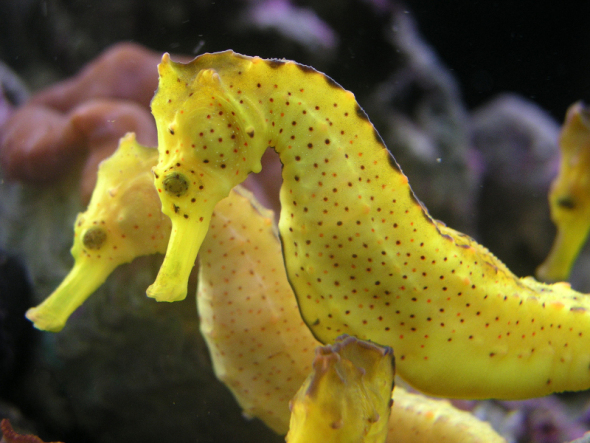
ENDANGERED SPECIES MONDAY | HIPPOCAMPUS KUDA
Once a common site within our oceans, the spotted seahorse (common seahorse) is facing extinction. The largest threat known is use and trade within the Traditional Chinese Medicine culture. As of 2015 its estimated that some twenty million (20 million) seahorses are used within the Traditional Chinese Medicine trade. (Photographer unknown).
Known in Mandarin as Hai Ma seahorses are believed to cure a wide spectrum of ailments and diseases and generally help to improve health. There is no evidence that I can locate to prove seahorses can improve human health in anyway shape or form. T.C.M practitioners have alleged seahorses can cure anything from asthma, arteriosclerosis, incontinence, impotence, insomnia, thyroid disorders, skin ailments, broken bones, heart disease, throat infections, abdominal pain, sores, skin infections.
Broken bones? Now that is about as ridiculous as it gets, impotence and broken bones are not illnesses but more physical complaints of which consuming seahorses is about as effective as pouring boiling hot water onto a third degree burn. A study in Taiwan located some fifty eight (58) sea horses from Taiwanese T.C.M vendors. A total of eight (8) different species were located. Seven (7) were listed as vulnerable, while one (1) was listed as endangered.
Source: http://www.jfda-online.com/article/S1021-9498(13)00043-4/abstract
The species listed as endangered was Hippocampus capensis commonly known as the Knysna seahorse (pictured below). The remaining seven (which doesn’t include the species pictured above) are scientifically identified as Hippocampus algiricus, Hippocampus comes, Hippocampus histrix, Hippocampus kelloggi, Hippocampus kuda, Hippocampus spinosissimus, and Hippocampus trimaculatus. If we include the species above - Hippocampus kuda this makes a total of eight (8) listed as vulnerable, and one (1) listed as endangered equating to nine (9) in total nearing extinction.
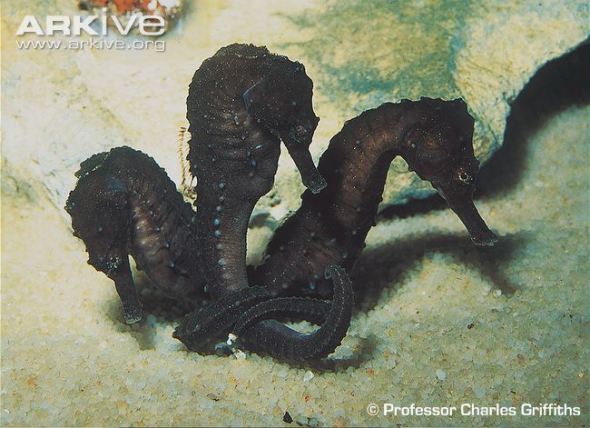
Image: Knysna seahorses | Credits Professor Charles Griffiths
Its quite possible there could be many more species of sea horses that haven’t been listed on the International Union for the Conservation Of Natures Red List [IUCN]. Hippocampus kuda was identified back by Dr Pieter Bleeker (July 10, 1819, Zaandam – January 24, 1878, from The Hague) whom was a Dutch medical doctor, ichthyologist, and herpetologist.
He was famous for the Atlas Ichthyologique des Orientales Neerlandaises, his monumental work on the fishes of East Asia published between 1862 and 1877. I don’t state this often however am going to repeat oneself again. Every single species of animal I’ve written about identified from the (1800’s) has almost all but gone extinct or are at least on their way towards extinction. Another pattern I have found is that many animals and plants used within the (T.C.M) trade were being used thousands of years ago - long before non-Asian travelers identified them. When the species are eventually identified - individual specie populations begin declining!
Since 1996-2003 the common seahorse has been listed as vulnerable, populations are declining very fast, furthermore there was little mentioned about the species at CoP17 in Johannesburg, South Africa; a country that is responsible for a large proportion of seahorse harvests. These harvests are legally shipped from South Africa into Asia, yet large numbers of seahorses are decreasing in South Africa.
I.A.R.F.A Environmental Crime Investigators located one legal trader identified as NGWABE TRADING that hosts a supplying ability of TWO HUNDRED METRIC TONS a month. When we inquired where these seahorses are harvested from, and the species caught we were not given a straightforward answer. NGWABE TRADING was though able to supply us with seahorses that have paperwork (all allegedly legal and above-board.) Yet we’re losing the vast majority of our seahorses. Furthermore I am very suspicious as to whether all of these seahorses are being harvested legally.
Two hundred metric tons per month is no different to two hundred metric tons of sand, cement, or rocks. On questioning the fishing company which I myself do suspect illegal poaching is going on here, many of these seahorses are dry traded to Asia. We’re talking big bucks too. So if this trade was restricted, or even banned, its likely South Africa would lose her seahorses in a matter of years, because legal farming operations wouldn’t be allowed if trade bans came into place. Meaning poaching would increase on a wide scale to supply Asia’s appetite for pseudo medicines.
Source: http://southafrica.tradekey.com/dried-sea-horses.htm
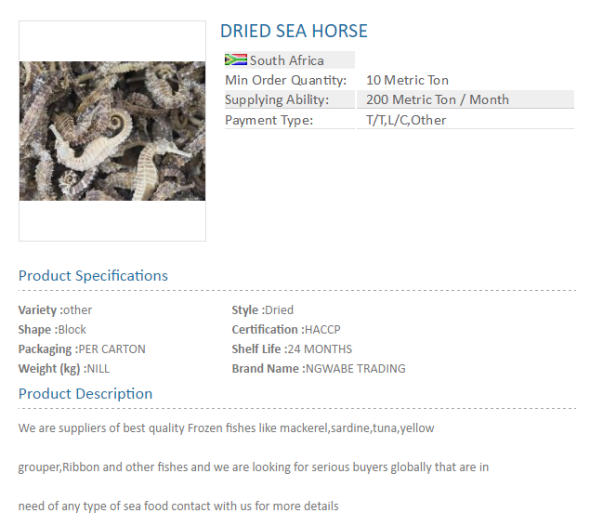
Image: One of many legal online seahorse/fish traders trading to Asia.
Seahorses are also used as an aphrodisiac and to facilitate childbirth in the T.C.M trade. As much as I want to disbelieve this, there is unfortunately “some scientific evidence” that does prove to a degree consuming a regular fish diet can improve sexual behavior within humans; however helping to conceive I am somewhat skeptical about. Sources are cited below for your information from the scientific community.
Source 1: http://www.pbs.org/wgbh/nova/seahorse/vincent.html
Source 2: http://www.acupuncturetoday.com/herbcentral/sea_horse.php
Between twenty (20) and forty (40) million seahorses are allegedly harvested every-year for the T.C.M trade, however if we go on the amount of trade originating from South Africa - its obvious that by the ton load this number is seriously under-quoted. If I myself was purchasing the minimum ton load of ten (10) tons per month - that would easily equate to over twenty (20) and forty (40) million seahorses per annum based on twelve (12) months.
So I think its safe to say we’re looking at possibly hundreds of millions rather than the claimed IUCN stats. I must also note that the spotted seahorse is listed on Appendix II, and to date we will never really know how many seahorses remain within their endemic range, or how many are illegally harvested?
The common seahorse in question which is the species harvested the most for the T.C.M trade is endemic to the following regions: American Samoa (American Samoa); Australia (Northern Territory, Queensland); Bahrain; Cambodia; Fiji; French Polynesia; Hong Kong; India; Indonesia; Japan; Kuwait; Malaysia; Micronesia, Federated States of ; Mozambique; New Caledonia; Pakistan; Papua New Guinea; Philippines; Saudi Arabia; Singapore; Solomon Islands; South Africa (KwaZulu-Natal); Taiwan, Province of China; Tanzania, United Republic of; Thailand; Tonga; United States (Hawaiian Is.); and Viet Nam.
Endemic ocean locations are: Indian Ocean – western; Indian Ocean – eastern; Pacific – western central; Pacific – northwest; Pacific – eastern central.
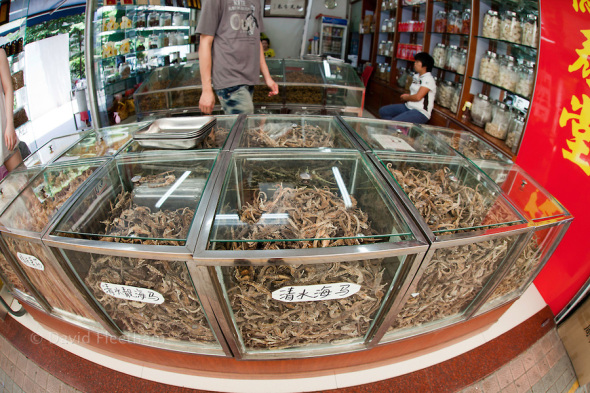
Image: Dried Seahorses for sale, China | Credits David Fleetham
THREATS
Common threats are cited above in more detail. Major threats though are listed below for your immediate attention:
Hippocampus kuda is threatened by damage to its habitats from coastal development and destructive fishing practices. Land-based activities such as coastal construction can diminish seagrass beds and mangroves while leading to increased pollution and siltation in surrounding marine waters. For example, in Malaysia Hippocampus kuda numbers declined due to an extensive port development around the Pulai Estuary that destroyed large tracts of seagrass meadow.
Fishing methods such as trawling result in substantial damage to seagrass beds globally, and especially in the Indo-Pacific. The decline in and fragmentation of the species’ habitats throughout its range indicates possible declines in populations in addition to those caused by fisheries.
All seahorse species have vital parental care, and many species studied to date have high site fidelity, highly structured social behaviour, and relatively sparse distributions. These life history parameters often make species susceptible to exploitation as has been demonstrated for a number of species, including seahorses. Although seahorses also have some traits, such as small body size, fast growth and high fecundity, that may confer resilience to exploitation pressures.
Due to the mode of spawning exhibited by Hippocampus kuda (ovoviviparous brood pouch male parental care), fecundity is comparatively low compared to non-brood pouch spawning fishes and therefore its capacity for population growth is more limited than other species. As a result of the lack of broadcast spawning of pelagic eggs, dispersal of potential recruits is limited. Additionally, given the limited swimming abilities of seahorses, it is highly unlikely that rescue effects would occur from adjacent populations.
Concluding: I am somewhat concerned about the species future survival. CITES is allowing use and trade however those countries that are listed under the convention are allegedly strictly regulated and monitored - I don’t call ten tons per month from one South African company strict regulation. Countries that are importing/exporting must prove they have permits, however I don’t quite understand how this area of monitoring is working - which it clearly isn’t as the seahorse trade is colossal within many Asian countries and South Africa too.
Hippocampus kuda is listed as vulnerable in the National Red Data Books of Singapore and Thailand, and endangered in the Red Data Book of Viet Nam. In France it is illegal to import seahorses under the name H. kuda.
The future is bleak unfortunately and with trade so fanned out, and from what I have seen on my visits to Asia (increasing) I do honestly believe we’re going to be reporting extinctions in the ‘very near future.’ To date there are thirty two (32) identified species of seahorses. Ecologically, they are important in food chains, consuming tiny fish, small shrimp, and plankton, and being consumed by larger fish (such as tuna and rays) and crabs. So if we lose the seahorse we lose yet another vital source of food for endangered tuna species, rays, crabs, and even whales (Etc.)
Source: http://www.newworldencyclopedia.org/entry/Seahorse
Thank you for reading and please share to create awareness and to improve education.
Dr Jose C. Depre.
Environmental, Botanical & Human Scientist.
www.speakupforthevoiceless.org
Vegan Monday | Braised Tofu With Mushrooms Taiwanese Vegan Style.

Vegan Monday | Braised Tofu With Mushrooms Taiwanese Vegan Style.
Every Monday and Friday we release on this site a vegan or vegetarian recipe for hundreds of thousands of readers across the globe during the last six months of the year. Furthermore we also release everyday via our main Facebook page a vegan or veggie recipe. Vegan Monday’s and Fridays are aimed at everyone, to encourage our readers twice a week to at least try a meat free or dairy free diet. We’re not forcing our beliefs or diet whatever you wish to call it onto you, however we’re giving you the option to at least try, and why not?
Today’s environment is heating up and fast. The IPCC (Intergovernmental Panel on Climate Change) has predicted a 2-3oc temperature rise globally come 2050-2100, and the main reason for this rise is due to massive methane and carbon pollutants entering the atmosphere. So we believe its in our interests and, yours to at least try to reduce the effects of climate change by opting for one or two days a week (meat and dairy free)?.
Over the past month we have been asked by many people around the world to provide recipes about tofu, or have been submitted meat recipes to change into meatless recipes. This Monday we’re going back to Asia briefly and next week we’re going to get our hands into some real European vegan and veggie recipes.
BRAISED TOFU WITH MUSHROOMS TAIWANESE STYLE
INGREDIENTS:
- 500g fresh tofu
- 3 colours of peppers (half a pepper of each)
- A stick of celery or two
- Wood ear fungus, a handful
- A cup of dried shitake mushrooms
- One chopped spring onion
- A chili
- A thumb of ginger
- Sauce – 2 tbsp soy sauce and 1 tbsp thick soy sauce, some sesame oil, corn flour and a vegetable stock cube, 2 tsp sugar (please check for palm oil, if added please try to leave out)
- One carrot shredded for topping
- A handful of shredded spinach for topping
INSTRUCTIONS:
Soak the dried mushrooms and wood ear fungus overnight in a cup of water (keep the water for the gravy/sauce).
Cut the tofu into small/medium triangles. Chop up the rest of the ingredients to your liking. In a small bowl make the sauce with the 2 soy sauces and the stock cube, the dried mushroom soaked water and use cornflour to thicken and 2 tsp of sugar. (Please leave the sugar out if catering for diabetics, or children).
Now quick fry all your peppers and celery, for about 20 seconds in hot shallow oil. In the hot pan pour out the oil and add in some sesame oil, just about 2 tbsp. Put the tofu pieces in the hot pan and add a teaspoon of sugar to help the browning. Turn the tofu patiently until all your sides are browned and crispy. For a sugar alternative - please click the link here http://greatist.com/health/30-sugar-substitutes-any-and-every-possible-situation
When it looks ready, push the tofu to the side and add the other vegetables, stir with a bit more oil if you need it, also add a bit of soy sauce. Add the bowl of sauce you made, now braise the whole lot together for a couple of minutes so the sauce flavor combines into the tofu. Optionally add a dash of Worcester sauce and a sprig basil to serve, garnish with grated raw carrot and spinach!
I’m not a fan of tofu, (but that’s my opinion), however when I cooked this last night it was incredibly tasty, and infused with so many different tastes that slowly emit into ones mouth stimulating all the tastes buds, palate and finally brain. The tip is not to overcook these foods, as it will drain the flavor, and you’ll be left with a tasteless goop. You can add like I did sunflower seeds or mixed seeds to the top, and a handful of crushed pistachio. Don’t forget to check the quick and easy recipe out below via the video.
Have a nice day.
Dr Jose C. Depre.
Environmental, Botanical & Human Scientist.
ENJOY
Swedish Democratic Treasurer (MP) | Trophy Hunting Threatened Species.
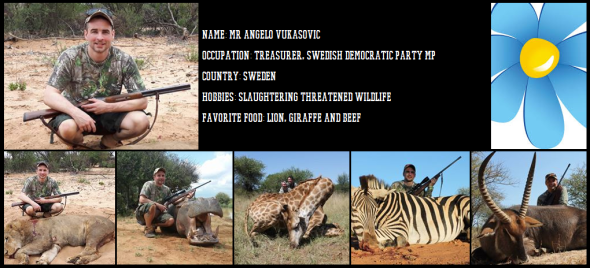
Minister Angelo Vukasovic | Swedish Democratic Party
Two months ago International Animal Rescue Foundation representatives undertook an investigation into the recreational lives of over 100 European Members of Parliament, and parliamentary radical wings. The investigation also focused on individual countries hosting radical party organisations that are in our opinion a threat to the European Union, society and as we believed - our environment and wildlife. The British National Party may want to take note of this; three (BNP) members have been caught red handed hunting wildlife within Africa from 2014-2016, one of the kills relating to a zebra was so barbarically cruel, the professional hunter [PH] had to intervene to put the animal out its misery, yet the BNP are against cruel slaughter?
However the most extreme group (in our opinion) was the Swedish Democratic Party of which some 20.1% of the Swedish public support. Fortunately since we revealed our findings to the press and media in relation to MP Angelo Vukasovic (pictured above) support for the party has declined slightly since going to press on the Sunday, Monday and Tuesday. We wish to thank all the press and media officers that have covered this single story thus far, however be prepared for further revelations, while we take a firm stance against (racism), we also take a bigger stance against cruel canned hunting, that often results in the animals being drugged, left in hideous pain and trauma, before being shot dead and put out of their misery (FOR SPORT)!?
Angelo Vukasovic made no attempt to conceal his past and present horrific hunting practices (which he is now). Furthermore when interviewed by local Swedish press and media, then international press and media, as the story broke, he strangely admitted to ‘canned hunting’. Something many hunters do not admit upfront, simply because they know its cruel, and often results in an aggressive backlash from the community of animal lovers. Vukasovic stated that most of the animals he hunted, including the lions from the Kalahari were fenced in (canned hunts), which we find somewhat suspicious. Did Vukasovic admit to the canned hunting knowing the backlash from the community wouldn’t be as harsh had he admitted to hunting wild male lions, which if proven to be true would see the community of animals lovers gunning for blood. Coincidentally them lion images are the ones that have vanished. All the others remain?
Two of the lions Vukasovic hunted are below. There is no proof that these two lions were hunted within a fenced in zone, no evidence of fences, and as yet no hunting agency coming forward to spill the beans. As explained, and should these two lions turn out to be legally hunted wild lions - then the tables turn because we then have an entire pride affected that may have had cubs, and without the males tending to the prides, the pride and cubs will eventually die thus resulting in further animal deaths. So when we witnessed Vukasovic admitting to the “lesser legal offence” we was was somewhat shocked, yet left suspicious.
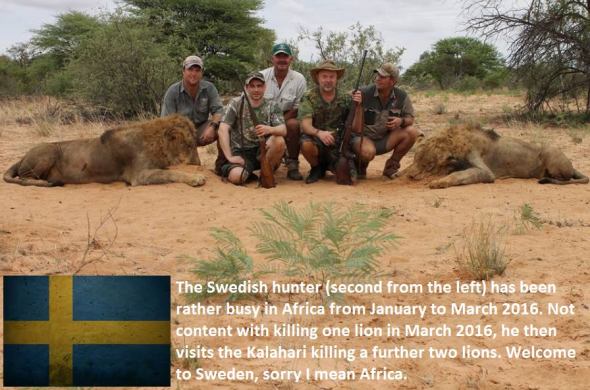
Image: Vukasovic two suspected wild lion hunts.
International Animal Rescue Foundation Africa and of course myself the (CEO) were accused of launching a ‘political assault onto the party’. Far from it. Vukasovic is no different from any other hunter, however in Vukasovic’s case he has a reputation to keep up (or tried), of which he is aligned to the Swedish Democratic Party. This is the issue that many (MP’s) seem to forget, regardless of whether they are in the office on duty, or on holiday (not on duty), an (MP) must at all times keep the parties reputation intact and under no circumstances bring the party into disrepute. The same applies more or less to any domestic civil working contract for 90% of companies around the globe in regards to the general public.
Vukasovic Plays Down the Hunt
In good old hunting fashion Vukasovic played down his hunting activities in South Africa and we believe Botswana. The same old lame excuses were; The hunt was legal; Well rehearsed; Hunting only problem animals; Reducing populations of farmed stock to preserve the remainder; Animals were killed quickly; No harm came to any animal; I ate 80% of all animals hunted. Canned hunting has been well documented as a cruel and barbaric sport where animals such as big cats (E.g) are mostly bred as cubs, petted by tourists, then when older are discarded into the hunting farm. From there they are often drugged, static bait traps are set so no fair chase can occur, and the animal[s] are then shot dead. And here’s me thinking that the Swedish Democrats are against cruel animal killing!?
Animals on canned-hunting ranches are often accustomed to humans and may be native to the area, raised elsewhere and brought in, or purchased from individuals who are trafficking in unwanted or surplus animals from zoos and likely even circuses. Canned hunts are becoming big business. Most of these ranches operate on a “no kill, no pay” policy, so it is in owners’ financial interests to ensure that clients get what they came for.
Canned hunting, which is the hunting of captive-bred lions, has become a huge industry in South Africa. Wild hunting controlled only 1.1% of the lion hunting market in 2010, leaving 98.9% of the market controlled by canned hunting. This industry has helped lift Africa’s total trophy hunting revenue to $200 million per year. South Africa, in particular, has become a hub for the industry, with markedly higher success rates of canned hunts. In South Africa alone, American and European tourists kill around 1,000 canned lions every year. Success for the farm owners comes at the ultimate cost for the lions.
Lions used for canned hunting purposes are bred for the sole purpose of eventually being hunted and killed. The slogan, “Bred for the Bullet”, has become popular amongst those against the practice. Lion cubs are often taken away from their mothers just days after birth, affecting the health of the cub due to lack of natural milk and forcing the mother into another oestrus cycle, making her more receptive to mating. In the wild, female lions will keep their cubs with them for almost two years. By separating the offspring from the mother, farm operators can increase the amount of cubs each lioness has per year. The average lioness used for breeding has around 5-6 litters every two years.
After the lions reach an age at which they are big enough to make attractive trophies, they are released in a fenced area of land for a very short period of time. Some lions have less than a week of this so-called ‘freedom’ until they are hunted. Some lions are even drugged so those paying for the hunt have a nearly guaranteed kill, which is part of the reason the reported success rate of canned hunts is 99.2%. For the entirety of the hunt the lions are at a disadvantage, and with no hope of possible survival, the welfare of the lion is completely disregarded.
International Animal Rescue Foundation Africa has contacted Swedish Democratic Leader Jimmie Akesson (MP) within the past two days calling for an immediate inquiry, however as yet there has been no reply. While we know (MP) Vukasovic is a treasurer for the party, and allegedly holds down another job as a hunt store owner, I the (CEO) am just not buying the fact that Vukasovic was able to fork out over 100,000 euros (just for the hunts alone) - on such a small basic income. Hippos and lions alone fetch up to a combined total of 80,000USD. So either Vukasovic is very wealthy, or as I suspect money has been siphoned off from the the public purse.
Meanwhile Jimmie Akesson (MP) stated in the image below that sustainable hunting in Sweden he and the party supports, however they wish to distance themselves from canned hunting. Unfortunately for the (SD’s) that’s come all too late, the damage has been done, questions are being asked, and very little in the way of answers are being given. Please click the link here https://www.facebook.com/jimmieakesson/posts/10154345838246108 to be directed to Jimmie Akesson’s official Facebook page, from which you can read the message and add your own thoughts to his feeble response.

Image: Swedish Democratic Leader Update 21st June 2016.
Closing, the following video I have left for Jimmie and the general public to view. Maybe after viewing the documentary (SD) leader will suspend the treasurer, failing that we’ll continue with naming and shaming further (SD) leaders that have been caught trophy hunting in South Africa, Zimbabwe, Botswana and Zambia.
NEWS AND MEDIA LINKS HERE:
http://www.expressen.se/kvallsposten/sd-politiker-dodade-lejon-och-at-upp-det/
http://www.aftonbladet.se/nyheter/article23038044.ab
OPEN LETTER TO THE [SD LEADER]
Stay tuned for more updates; don’t forget if your a member of parliament anywhere in the EU, we’re watching. If you bring the European Union into disrepute we will name and shame you, your details with evidence will be made public, and we will ensure your role as a member of Parliament is dealt a heavy blow. Police or thugs that try to intimidate us, or try and shut us down; please rest assured that numerous people are working on this case, and you’ll never stop us from revealing such data to the public that have a right to know.. ..IARFA does not take kindly to European trophy hunters wreaking havoc in any country, as a European you was not raised in this way, trophy hunting and canned hunting is not part and parcel of European culture. Pick grapes, grow fruit and vegetables, keep the EUROPEAN UNION in tact, and do not bring us into disrepute.

Have a nice day
Dr Jose C. Depre
Chief Executive Officer.
VEGAN MONDAY: TONI DEVINE’S PEPPERY MUSHROOM SOUP (BELFAST)
VEGAN PEPPERY MUSHROOM SOUP (UK)
As we are now nearing the end of our South American vegan and vegetarian journey, we’ve decided to take a wee detour back to Northern Ireland (aka Belfast) for a little warmer, and wow this was one amazingly nice, warm, and actually rather filling dish. This recipe is from Mme Toni Devine whom supervised my first prepping and cooking of a dish that frankly I haven’t even made before. So what the hell, I was at the mercy of a rather calm (yet stern chef) ;O)
I’ve always purchased vegan or veggie soups from the supermarket, but today I tried a little something different, and to be honest this was the very best soup I have tried, and made, and yes I ate the lot, from the very pan I cooked it in, why not?
INGREDIENTS
One half of a red onion
1/3 of a lemon
1 punnet of button mushrooms
1 punnet of chestnut mushrooms
1 clove of garlic (I used 2)
Cup of roughly chopped parsley
Coconut cream
1 tablespoon of olive oil (optional)
1-2 small tea spoons of pepper
1 tablespoon of cayenne pepper (optional)
1 vegetable stock cube (you can make your own veggie stock)
1 large knob of vegan butter
1 1/2 large cups of boiled water
INSTRUCTIONS
Chop the half of a red onion and your parsley. Take the nob of vegan butter and add that to a hot pot. Gently cook the onions and the parsley for approximately 4-5 minutes on a gentle heat. Next, take your button, chestnut mushrooms, and crushed garlic, add them to the pan with the onions and parsley. Brown gently, until the mushrooms are cooked. Take your pepper and cayenne pepper and add to the cooking pot. (I used cayenne pepper due to my own culture, and because I wanted the soup to be slightly more spicier).
While the ingredients are cooking on a low heat, boil enough water to fill the pot 3/4 of the way. Take your vegetable stock cube and add that to a cup or jug. Once the water is boiled add enough hot water to break the veggie stock cube up. Then add the remainder. Once the stock is completely dissolved and your pot of mushrooms, parsley, onions Etc is now browned add the hot veggie stock water to the pot. Add one tablespoon of olive oil (if required).
Bring the pot to the boil, then reduce the heat to a very gentle simmer. Take your 1/3 lemon and squeeze into the pot, stirring the pot of ingredients every ten minutes. Then half way through the cooking add the coconut cream and stir well. DO NOT add the lemon after adding the cream as this may split the cream.
Image: Leave the pot to simmer gently for 30 minutes.
Once your 30 minutes is up, take your blender and blend all of the ingredients within the pan, until the pan is a fine soup like consistency as seen in the image (top screen), or below.
Image: Blend the mix into a fine soup until no lumps are seen.
Your soup is now ready to serve. Take some cold or warmed crusty bread buns, or as I used Peshawar Naan Bread (and crusty rolls). Eat from the pan as I did, or serve into a nice warm bowl, and enjoy with boiled veggies, or on its own. This really was a stunning yet simple soup to make, and not a single piece of goodness is lost. What goes into the pan stays in the pan, and doesn’t like some homemade soups end up going down the sink. Who needs supermarket soup when you have this?
Image: Serve with a wee bit of coconut cream and rough chopped parsley.
Once ready to serve, take a wee bit of coconut cream, some roughly chopped parsley, and eat hot. That’s as simple as its going to get, and it really was amazing. Mme Devine’s cooking is actually quite amazing, and no, I’m not saying that because were in a relationship. I would recommend this style of cooking to anyone, and its 100% homemade how it should be. Nothing is lost in the making, its cheap to buy, and its packed with goodness, and nutritious. I love cooking, and so does Mme Devine. Stay tuned for more delights…..
Recipe: Mme Toni Devine, Northern Ireland (Vegetarian).
Dr Jose C. Depre
Endangered Species Monday: Papustyla pulcherrima | Special Report.
Endangered Species Monday: Papustyla pulcherrima
Manus Green Tree Snail - Very first invertebrate to be listed on the Endangered Species Act of the United States of America (2015) Endangered Species Post Special Report.
This Monday’s Endangered Species Post (ESP) I take a wee glimpse into the life of the Green Tree Snail, also commonly known by Papua New Guinea’s natives as the Manus Green Tree Snail. Image Credit: Stephen J. Richards.
Identified by Professor Rensch 1931, Rensch was born on the 21st January 1900 in Thale in Harz and died on the 4th April 1990 in Münster, (Germany), Professor Rensch was an evolutionary biologist, zoologist, ethologist, neurophysiologist and philosopher and co-founder of the synthetic theory of evolution. He was professor of Zoology and Director of the Zoological Institute at the Westphalian Wilhelms University in Münster. Together with his wife Mme Ilse Rensch he also worked in the field of Malacology and described several new species and subspecies of land snails.
The Manus Green Tree Snail is identified as Papustyla pulcherrima commonly known as the Emerald Green Snail. From 1983-1994 this particular species of snail was considered (extremely rare). Back in 1996 when scientists managed to again finally catch up with this stunning little mollusk, the species was then listed as (data deficient) of which to date there remains little information about this (rare) but beautiful snail.
P. pulcherrima is endemic to the Papa New Guinea northern island of Manus of which the species is listed as (near threatened), and has also been reported on the adjacent Los Negros Island. Environmental scientists have confirmed from villagers on the main Manus Island that the species is not located anywhere else. However there are some sketchy reports that the species “may be located on surrounding islands”, however there is no evidence to back these claims up.
Environmental scientists have confirmed for now that the species is located in only 12-13 areas of the Manus Island[s]. Further reports have confirmed that mature individuals are on the decline (which if not controlled could evidently see the species re-listed as vulnerable or endangered). The Manus Green Tree Snail is not believed to be living within fragmented zones. The species is restricted to forest and low intensity garden ‘type’ habitat. Declines have been noted within all 12-13 identified habitats on the Manus Island and adjacent Los Negros Islands. Population history is pretty much undocumented although has been shown to be slowly declining.
Image: Manus Green Tree Snail.
Back in 1930 when Professor Rensch identified the Manus Green Tree Snail, locals soon began collecting the species for trade thus seeing the mollusk now nearing endangered listing. Demand for the Manus Green Tree Snail has now drastically increased threatening the species furthermore. Locals continue to collect this rather unusual colored species shell for use within the jewelry trade. There are now “very serious concerns” that trade may eventually push the species into extinction.
Due to mass trade exploitation the Manus Green Tree Snail is the very first invertebrate to be listed on the Endangered Species Act of the United States of America. International trade has been controlled by export permit since 1975 under the Convention on International Trade in Endangered Species of Wild Fauna and Flora (CITES) appendix II. Unfortunately this is not stopping locals from harvesting the species, and trade is still continuing despite it now a criminal offence under United States and some international laws.
“Overexploitation threatens the Manus Snail”
Market sales data collected from the Lorengau market, over a six day period suggest that annual sales at the market may approach 5,000 shells. Investigations by the Wildlife Conservation Society (WCS) reveal that large quantities of shells are still being attempted to be exported out of the country. Online searches revealed the sale of the shells, often marketed as antiques, occurring in open forums and internet market places based in New Zealand, Australia, and the United States of America (USA). International Animal Rescue Foundation has ran numerous traces online of which located yet again Ebay as being a number one trading site of the “threatened species”, please view the image below and click the image link that’ll direct you to that site.
“EBAY JAPAN IS A HOTBED FOR ILLEGAL TRADE OF THE MANUS GREEN SNAIL”
International Animal Rescue Foundation’s External Affairs Department and the Environmental Cyber Crimes Unit located many a sites trading the Manus Green Tree Snail’s shell which is illegal under some trade law, unfortunately the Ebay site listed above, located within Japan is one of many more that are trading (despite the species nearing extinction).
I.A.R.F’s Environmental Cyber Crimes Unit have since filed a complaint with Ebay, providing all the relevant data to now remove these species from their sites, however its likely to prove negative as the trader could very well state they harvested or purchased the shells before international laws were drafted. Furthermore a trace of the owner that owns this site above which is in violation of the United States and Cites laws (is located within the United States). So in regards to enforcement, breaking this link is going to be somewhat of a tough cookie. Further trade was witnessed here via what we can only believe is alleged “antiques”.
Further trade all of which is illegal has been recorded hereto - this site linked back to a Mr Rob West of 121 Henderson Road, Sheldon, Brisbane, Queensland 4157 Australia, Telephone: 610732061636. Mr West from Brisbane categorically states that he doesn’t own a shop, and is a one man band, yet clearly this link states otherwise. Further evidence revealed antique trade conducted on the Ebay site, see in the image below (illegal under United States law).
Click the image link below to view more.
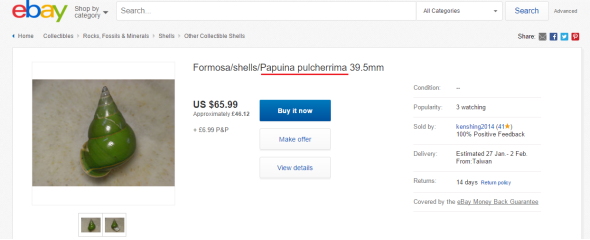
“Illegal to trade under the Endangered Species Act of the United States of America”
The environmental wildlife crimes investigation team linked to TRAFFIC and Cites stated:
It is possible the avoidance of conventional nomenclature is an attempt to avoid detection by authorities. In some cases, sellers on internet market places were based in CITES signatory countries (including: Australia, Italy, New Zealand, Singapore and USA) while others were not (e.g. Taiwan). Currently, volumes of shells on sale in such online market places appear low, suggesting that the existing controls on international trade maybe adequate. However, given that the online prices of shells were often orders of magnitude greater than market prices on Manus Island, vigilance will be required to insure that illegal international demand does not fuel a resurgence in snail collection.
Despite the massive trade on Manus Green Tree Snails online and within open Asian markets, its literally impossible to determine if this trade will eventually lead to the species being pushed into extinction. However it MUST be noted that there are currently only 12-13 identified habitats that the snail currently inhabits. And based on traces online conducted by the I.A.R.F’s External Affairs Department - trade is most certainly “out of control”, and not as Cites has reported (2012).
The shell of this species is a vivid green color, which is unusual in snails. The green color is however not within the solid, calcium carbonate part of the shell but instead it is a very thin protein layer known as the periostracum. Under the periostracum the shell is yellow.
MAJOR THREATS
The Manus Green Tree Snail is mostly threatened by habitat destruction through forest clearance: logging, plantation development (especially rubber) and to a lesser extent road developments. Increasing human population growth and an increasing cultural demand for deriving cash incomes from the land will likely see the rate of forest degradation increase in the future. Harvest occurs when trees are felled as part of traditional shifting cultivation and the snails, typically found in the canopy, suddenly become exposed. Such harvesting is not uncommon but it is likely to be of lower significance than the longer term habitat degradation caused by such agricultural practices.
While harvest for illicit international trade is occurring, the volumes are not “allegedly” thought to be large compared to historic rates, although they may approach levels seen in the legal domestic trade. However, given that the prices of shells internationally are often orders of magnitude greater than market prices on Manus Island, vigilance will be required to insure that illegal international demand does not fuel a resurgence in snail collection.
Notable deposits of gold have been found in central Manus and a mine operation will likely result in the next decade although no details of the plan have been released (as of 2014). The forests of Manus Island were badly affected by the 1997-1998 El Niño which resulted in a prolonged drought. Should climatic change result in increased rates of similar conditions this may constitute a future threat to the snail species, however, current predictions suggest that future incidence of drought in Papua New Guinea will decrease (Australian Bureau of Metrology and CSIRO 2011).
Despite the reassurances from Cites, WCS and the local wildlife organisations - evidence clearly points to large scale online trade legal and illegal. Furthermore there is no telling if shells online are antique or smuggled from the Manus Islands which is very concerning.
Manus Green Tree Snail is the first such snail to be listed on the threatened list of endangered species (USA). Research also explains to us that its likely the species will be plundered into extinction - very soon. Enjoy the video.
Thank you for reading, and please be most kind to share to create awareness and education.
Dr Jose C. Depre PhD. MEnvSc. BSc(Hons) Botany, PhD(NeuroSci) D.V.M.
Environmental & Human Science
Donate by clicking the link below:
https://www.facebook.com/Anti-Pet-and-Bush-Meat-Coalition-474749102678817/app/117708921611213/
Sign up here to our A.P.B.M.C news feed below here:
https://www.facebook.com/Anti-Pet-and-Bush-Meat-Coalition-474749102678817/app/100265896690345/
Follow me on Twitter here:
https://twitter.com/josedepre11
Sources:
IUCN, WWF, CITES, WCS, Ebay, Wikipedia, Australian Bureau of Metrology and CSIRO
Endangered Species Friday [Case Study]: Dusicyon australis
Endangered Species Friday [Case Study]: Dusicyon australis
How the Fur Trade Pushed the Falkland Islands Wolf into Extinction.
This Friday’s Endangered Species watch Post (ESP) focuses on a species that was literally hunted into extinction. Daily I read comments about our wildlife or speak to animal lovers, activists or conservationists of which many show great concern in relation to legal hunting E.g (Cites permitted trophy hunting), or poaching E.g (non-permitted illegal hunting).
D. australis was identified back in 1792 as the (Falklands Wolf) by Dr Robert Kerr (1755 – 11 October 1813) was a scientific writer and translator from Scotland. Dr Kerr was born in Roxburghshire as the son of a jeweler. He studied medicine at the University of Edinburgh and practiced at the Edinburgh Foundling Hospital as a surgeon. He translated several scientific works into English, such as Antoine Lavoisier’s work of 1789, Traité Élémentaire de Chimie, published under the title Elements of Chemistry in a New Systematic Order containing All the Modern Discoveries, in 1790.
In 1792, Dr Kerr published The Animal Kingdom, the first two volumes of a four-tome translation of Professor Linnaeus’ Systema Naturae, which is often cited as the taxonomic authority for a great many species. (He never did the remaining two volumes.) What would Dr Kerr say now if he knew this magnificent creature he discovered has since been pushed into extinction via ‘legal hunting practices and deliberate persecution’?. Like few conservationists and philanthropist’s that I have spoken to whom have identified species of birds, frogs and new world primates their most common reaction is utter shock and frustration, although most were not surprised.
While Dr Kerr was the primary individual that named and listed the species, Capt. John Strong, a British Marine explorer was the very first person to discover the Falkland Island Wolf upon landing on the Falkland Islands back in the 1690’s. Based on historical and fossil records we know the species was living quite a peaceful and undisturbed life. Historical records also prove that Charles Darwin who was a naturalist and geologist whom visited the islands back in 1833 stated the Falkland’s Wolf was commonly seen. Its from this point back in the early 1800’s after Charles Darwin’s visit that the Falkland Wolf populations began to decline. Within approximately thirty years after Charles Darwin’s visit - the species then went extinct.
From 1833 to 1876 when active exploration’s and colonization’s began increasing the evidence pinpoints that humans were the primary cause for the species complete extinction. Had the Falkland’s not been colonized or disturbed by explorers and hunters its very likely the Falkland Islands Wolf would still be with us today. That is based on my own expert opinion and scientific studies that have proved islands with no human interference over eighty million years old up to the 1900’s the majority of non-colonized islands regardless of their size - all their natural wildlife discovered is still mostly intact. Take the island of Madagascar as an example!
The prehistoric breakup of the supercontinent Gondwana separated the Madagascar-Antarctica-India landmass from the Africa-South America landmass around 135 million years ago. Madagascar later split from India about 88 million years ago, allowing plants and animals on the island to evolve in relative isolation. As a result of the island’s long isolation from neighboring continents, Madagascar is home to an abundance of plants and animals found nowhere else on Earth. Approximately 90 percent of all plant and animal species found in Madagascar are endemic. So we know that if left untouched both the Falkland island and Madagascar’s habitat and wildlife both flora and fauna lived undistributed.
While Madagascar’s history is a little different from the Falkland Islands the evidence is clear, that as soon as explorers, human colonies, immigrants and travelling settlers visited - the habitat became threatened just as the Falkland’s Wolf became extinct in under thirty years after Charles Darwin’s visit, 1833. Only 10 percent of Madagascar’s forests now remain. Also, recent estimates suggest that 1-2 percent of Madagascar’s remaining forests are destroyed each year, and that a staggering 80-90 percent of Madagascar’s land area burns each year. Ninety percent of Madagascar’s Lemurs are moving towards complete extinction - and why? from 700 CE – 1500 when immigrants, traders and explorers arrived - wildlife and habitat began to decline gargantuanly. However based on historical fur trade records a pattern has emerged - its concerning - its continuing - and if not banned its likely other animals will suffer due to the fur trade.
“Our ancestors are not to blame”
But lets not jump the gun here blaming our own ancestors for the primary decline of wildlife and destruction of habitat. As Charles Darwin explained in the 1830’s on visiting the Malvina the Falkland Wolf was still quite commonly seen. Just as Lemurs and forest remained intact on the island of Madagascar before humans arrived, history tells us though that our ancestors mostly respected the land and wildlife however, its from years of 1800 that wildlife and habitat began declining. The Falkland’s Wolf wasn’t killed off by our ancestors as such but more - US fur traders from the 1830s, and when Scottish settlers arrived in the 1860s began raising sheep on the Island, D. australis was poisoned as a pest species too.
Is it just a mere coincidence that the Falkland Islands Wolf went extinct as soon as the fur trade began booming from the 1600’s to the 1800’s dare I ask? commercial fur trade in North America grew out of the early contact between Indians and European fisherman who were netting cod on the Grand Banks off Newfoundland and on the Bay of Gaspé near Quebec. Indians would trade the pelts of small animals, such as mink, for knives and other iron-based products, or for textiles. Exchange at first was haphazard and it was only in the late sixteenth century, when the wearing of beaver hats became fashionable, that firms were established who dealt exclusively in furs. The trade then spread to America thus seeing United States citizens hunting the Falklands Wolf into extinction. So again I question is it correct to blame our ancestors whom colonized the Falkland Islands of which Darwin stated the wolf was still commonly seen from 1830, bur more blame Canadians, Americans and Europeans for the introduction of the fur trade? That’s the problem, not colonization or immigration but sheer commercialization of an animal trade and greed.
There are some other factors of course that relate to the Falkland’s Wolf extinction. The species natural prey which was rodents were in decline too. Due to the decline of certain prey specimens this unfortunately forced the wolf into now human populated agricultural lands, hunting sheep. The Falkland’s Wolf was then seen as a pest of which settlers, mainly farmers deliberately laid poisoned traps thus decreasing populations furthermore. Its believed that the decline in rodents was primarily due to humans protecting their farms and crops. None knows for sure the entire Falkland’s Wolf diet but - ground-nesting birds such as geese and penguins, grubs and insects, as well as seashore scavenging would most likely have been common prey and foraging behavior.
Conclusion:
The Falkland’s Wolf was killed off by greed, legal hunting and the fur trade. Its quite sad to know that after Darwin’s notes were made public the species soon became extinct some thirty years later, had them notes not been publicized - the species could still be with extant. While we have certain protocols, laws and agreements in place such as the Convention on International Trade of Endangered Species (Cites), and the International Union for the Conservation of Nature - history is still repeating itself, so I do at the best of times question why we have such organisations in place to protect wildlife - when its “we humans” that should be taking the stand and protecting what is left on Planet Earth. While poaching remains a significantly large threat to many large fauna such as Lions, Elephants, Rhino and aquatic wildlife. The agricultural trade, indiscriminate hunting and habitat loss remains the number one threat to all species of flora and fauna.
So, how do we stop further extinctions and declines of wildlife? Well if you’ve read this entire article all the way through (the answer is in front of you).. You’ve just got to open your eyes, absorb the information and act on it.
Dr Jose C. Depre.
Environmental and Botanical Science.
info@international-animalrescue-foundation.org.uk
Endangered Species Monday: Archaius tigris
Endangered Species Monday: Archaius tigris
This Mondays Endangered Species watch Post (ESP) I document on yet another African species of wildlife that hunting revenue is not helping to preserve. The Tiger Chameleon was identified back in 1820 by Dr Heinrich Kuhl (September 17, 1797 – September 14, 1821) was a German naturalist and zoologist. Kuhl was born in Hanau. He became assistant to Coenraad Jacob Temminck at the Leiden Rijksmuseum van Natuurlijke Historie. (Image: Credited to Henrick Bringsoe, A tigris).
In 1817 he published a monograph on bats, and in 1819 he published a survey of the parrots, Conspectus psittacorum. He also published the first monograph on the petrels, and a list of all the birds illustrated in Daubenton’s Planches Enluminées and with his friend Johan Coenraad van Hasselt (1797–1823) Beiträge zur Zoologie und vergleichenden Anatomie (“Contributions to Zoology and Comparative Anatomy”) that were published at Frankfurt-am-Main, 1820.
Commonly known as the Tiger Chameleon or Seychelles Tiger Chameleon the species is currently listed as [endangered] which is not uncommon as like many Chameleons within the Seychelles their range is shrinking by the year or being overrun by invasive botanical species.
Endemic to the Seychelles the species has been listed as endangered since 2006 of which populations trends are unknown. Much documentation often cites the species at “comparatively” low density, however one must not take this as factual until a true population count is seen. It has been alleged that for every [five hectares] there is possibly 2.07 individuals which isn’t good ‘if true’ since the island is only 455 km2.
From what we know the species remains undisturbed where there aren’t invasive Cinnamon trees identified as the Cinnamomum verum. However where C. verum is spreading the Tiger Chameleons habitat is under threat from this invasive plant. There is a negative correlation between Chameleon density and the presence of cinnamon, suggesting this invasion is detrimental to chameleon populations. Negative correlation is a relationship between two variables such that as the value of one variable increases, the other decreases.
The Tiger Chameleon’s main endemic range on the Seychelles islands is Mahé, Silhouette and Praslin. A historical record from Zanzibar (Tanzania) is erroneous. It occurs from sea level to 550 m asl, in areas of the islands that have either primary or secondary forest, or in the transformed landscape if there are trees and bushes present. Although they are currently estimated to have a restricted distribution on each island (following survey transects conducted by Dr Gerlach if anecdotal observations from transformed landscapes (e.g. degraded areas outside the areas surveyed) are valid, then the distribution would be larger than mapped at present.
To date the only [non-active] conservation actions that I am aware of are within the Vallee de Mai on Praslin which is currently not a protected national park. Fortunately the species is protected to some degree in the Morne Seychelles, Praslin and Silhouette National Parks. The primary threat within non-protected areas is as explained invasive Cinnamon which seems to be posing similar threats to both small reptilians, insects and birds on the islands and mainland Madagascar.
While the species has been in the past used as a trade animal it was alleged that there were no Cites quotes since 2000 - 2014. However from 1997 - 2013 a total of twelve live specimens were legally exported [despite the species threatened at risk status]. Cites allowed the twelve species to be exported for use within the pet trade which I myself find somewhat confusing. Two specimens were exported to Germany in 1981 with the remainder [10] sent to Spain. I am a little perplexed as to why these twelve specimens were legally exported, furthermore I have found no evidence or follow up data that would satisfy me in believing this export was even worthwhile for the species currently losing ground within their natural habitat.
From 1981 -2010 a further 98 dead specimens were legally exported for scientific zoological projects. Then in 1982 a single live specimen was legally exported with Cites permit for experimental purposes. While I cannot [again] locate any evidence or reason as to why this single specimen was exported alive - I must make it clear that Cites is sympathetic to Huntington Life Science’s and various other animal experimental laboratories. However this doesn’t prove that Cites has exported to anyone of these experimental research centers, it is merely my assumption.
Image: Archaius tigris
No other trade is reported out of the Seychelles, although re-export of specimens imported to Germany and Spain has been reported to Switzerland and South Africa, respectively (UNEP-WCMC 2014). This species is present and available in limited quantities in the European pet trade, and illegal trade and/or harvest may occur on a limited basis. ‘A’ report handed to myself from an [anonymous 2014] officer from the office of UNEP states that a population of some 2,000 specimens has been recorded [2014] however there is yet again no census historical data to back these claims/report up. I again must point out that if its proven there are no fewer than [2,000 Tiger Chameleons] remaining in the wild and, Cites is allowing export then Cites is going to come under immense pressure from International Animal Rescue Foundation Africa because exporting live animals for pet trade at such ‘alleged’ depressed populations - is neither helping the species nor supportive of conservation practices.
Threats
The main threat is habitat degradation as a result of the invasion by alien plants species, especially Cinnamomum verum, principally on Mahé and Praslin. Cinnamon is displacing other vegetation, it is present all over the islands and it is the fastest growing, heaviest seeding plant in most areas and is changing the composition of the forests. Currently it makes up 70-90% of trees in Seychelles forests, reaching >95% in some areas. For Archaius tigris, the cinnamon trees provide a normal structure of vegetation, but the invaded forests support a massively diminished insect population, somewhere in the region of 1% of normal abundance. This excludes invasive ants which are the only common invertebrates associated with cinnamon.
In addition, the cinnamon produces a denser canopy than native trees, giving deeper shade which excludes forest floor undergrowth (other than cinnamon seedlings), and this also is a factor in the reduced insect abundance. The Chameleons are found on cinnamon and in cinnamon invaded areas, as long as there is a wide diversity of other plants and a dense undergrowth. In fact, rural gardens can provide habitat for the Chameleons, because these tend to be more diversity in terms of flora, and therefore can support invertebrate fauna.
Dr Jose C. Depre
Environmental and Botanical Scientist.
Endangered Species Friday: Diomedea amsterdamensis - An Ocean of Grief.
Endangered Species Friday: Diomedea amsterdamensis
This Friday’s (ESP) Endangered Species watch Post I dedicate to one of the most stunning and adorable of all plane like birds. Listed as [critically endangered] and identified back in 1983 by South African Dr Jean Paul Roux whom is a Marine Biologist studying Zoology, Systems Biology and Marine Biology at the University of Cape Town, South Africa Jean Paul Roux works full-time at the Department of Biological Sciences, Cape Town. (Image D. amsterdamensis fledglings)
(Image: Birdingblogs.com)
Commonly identified as the Amsterdam Albatross or Amsterdam Island Albatross the species was listed as [critically endangered] back in 2012. This gorgeous bird is endemic to the French Southern Territories of which its populations are continuing to decline at a rapid pace. Populations were estimated at a mere 170 individuals which in turn ranks as the worlds most endangered species of bird. Out of the 170 individuals there are a total of 80 mature individuals consisting of 26 pairs that breed annually.
Between 2001-2007 there were a total of 24-31 breeding pairs annually, which leaves a slightly lower population count today of around 100 mature individuals. Back in 1998 scientists stated that there were no fewer than 50 mature individuals if that. The Amsterdam Albatross doesn’t naturally have a small population however qualified for the category of [critically endangered] due to this reason when identified in 1983. Furthermore pollution, habitat destruction and disease remain pivotal factors that’s decreasing populations furthermore. The video below from MidWay island explains a little more about pollution and birds of this caliber.
Its quite possible that there could be more unidentified groups within the local territory or elsewhere, unfortunately as yet there is no evidence to suggest the Amsterdam Albatross is located anywhere else, however there have been sightings, which do not necessarily count as the species being endemic to countries the bird may have been noted within.
The species breeds on the Plateau des Tourbières on Amsterdam Island (French Southern Territories) in the southern Indian Ocean. An increase of populations was documented via census back in 1984, a year after identification. Marine Biologists have stated that population sizes may have been more larger when its range was more extensive over the slopes of the island.
Meanwhile in South Africa satellite tracking data has indicated the Amsterdam Albatross ranges off the coast of Eastern South Africa to the South of Western Australia in non-breeding pairs. There have been some [possible] sightings over Australia through to New Zealand too. Meanwhile South Africa “may” have its first breeding pair this must not be taken as factual though. Back in 2013 a nature photographer photographed an Amsterdam Albatross off the Western Cape of South Africa which is the very first documented and confirmed sighting [2013].
AN OCEAN OF GRIEF
Breeding is biennial (when successful) and is restricted to the central plateau of the island at 500-600 m, where only one breeding group is known. Pair-bonds are lifelong, and breeding begins in February. Most eggs are laid from late February to March, and chicks fledge in January to February the following year.
Immature birds begin to return to breeding colonies between four and seven years after fledging but do not begin to breed until they are nine years of age. The Amsterdam Albatross exact diet is unknown, but probably consists of fish, squid and crustaceans. During the breeding season, birds forage both around Amsterdam Island and up to 2,200 km away in subtropical waters which is something of interest. During the great Sardine Run many aquatic species consisting of birds, seals, sharks and whales hit the South African oceans hard for sardines. So I am calling on my fellow South African friends to please be on the lookout for this rather elusive bird.
Read more here on the Avian Biology.
Image: Amsterdam Albatross mating ritual, credited to Andrew Rouse.
Diomedea amsterdamensis, is quite a large albatross. When described in 1983, the species was thought by some researchers to be a sub-species of the wandering albatross, D. exulans. Bird Life International and the IOC recognize it as a species, James Clements does not, and the SACC has a proposal on the table to split the species. Please refer to the link above on Avian Biology which will explain more on the bird and its current classification.
More recently, mitchondrial DNA comparisons between the Amsterdam albatross, the wandering albatross Diomedea exulans, the Antipodean albatross D. antipodensis and the Tristan albatross D. dabbenena, provide clear genetic evidence that the Amsterdam albatross is a separate species.
Threats
Degradation of breeding sites by introduced cattle has decreased the species’s range and population across the island. Human disturbance is presumably also to blame. Introduced predators are a major threat, particularly feral cats. Interactions with longline fisheries around the island in the 1970s and early 1980s could also have contributed to a decline in the population.
Today the population is threatened primarily by the potential spread of diseases (avian cholera and Erysipelothrix rhusiopathiae) that affect the Indian Yellow-nosed Albatross Thalassarche carteri population 3 km from the colony. Infection risks are very high and increased chick mortality over recent years suggests the population is already affected.
The foraging range of the species overlaps with longline fishing operations targeting tropical tuna species, so bycatch may also still be a threat, and a recent analysis has suggested that bycatch levels exceeding six individuals per year would be enough to cause a potentially irreversible population decline. Having a distribution on relatively low-lying islands, this species is potentially susceptible to climate change through sea-level rise and shifts in suitable climatic conditions. Plastic pollution has also been noted as problematic.
International Animal Rescue Foundation Africa and International Animal Rescue Foundation France are currently working on projects to reduce more plastic within bird habitat that has never been visited by the organisation before. The current plight of bird habitat and plastic pollution within the Pacific ocean needs to be worked on by everyone, furthermore addressed immediately.
To date all twenty two species within the four genera of Albatross are heavily threatened with extinction. There remains no species at present that is listed as [least concern]. The future is indeed very bleak for all 22 species and something we now need to work on and towards to preserve Albatross’s before extinction occurs within a decade for the vast majority of all twenty two species and sub-species.
Thank you for reading.
Please share to make aware the plight of this stunning bird and the remaining twenty two species too.
Dr Jose C. Depre.
Botanical and Environmental Scientist.
A planet without birds is a world not worth living within anymore. Daily I am traumatized and deeply disturbed at viewing the destruction we have caused to these stunning animals and, their natural habitat. I am pained, deeply frustrated and infuriated at international retail companies whom preach good yet practice negligence killing off via plastic pollution our species of birds. Jose Depre
Endangered Species Monday: Afrithelphusa monodosa.
Endangered Species Monday: Afrithelphusa monodosa
Warning: Extinction is now Inevitable
This Mondays (E.S.P) -Endangered Species watch Post I focus on a species of fresh water crab that’s rarely spoken about within the theater of conservation, or animal rights forums. Identified by Mr Bott from which I know little on and about this particular species of marsh crab is currently listed as endangered. Rarely do I document on a species of animal that I and other conservationists know will be extinct within the next five years. My aim for this Monday’s endangered species column is to raise awareness about the plight of this little creature, in a way I hope will force Cites and the Guinea government to now implement emergency evasive action to halt extinction immediately. (Image: Purple Marsh Crab, photographer unknown)
I must also point out that one must not confuse the [common name] of this species [above], identified back in 1959, to that of the United States [Purple Marsh Crab]. Professor Linnaeus created the nomenclature system for a reason, and yet again I am seeing two species of animals that hold the same common names being confused with one-another. Sesarma reticulatum is not under any circumstances related to the Afrithelphusa monodosa pictured above and below.
Endemic to Guinea the species was listed back in 1996 as [critically endangered]. However since the last census was conducted back in [2007] the Purple Marsh Crab has since been submitted into the category of [endangered]. Unfortunately as yet there remains no current documentation on population size, furthermore from the 1996 census, marine conservation reports suggest that no fewer than twenty specimens have been collected from the wild. To date the ‘estimated’ population size stands at a mere 2.500 mature individuals.
Back in 1959 Mr Bott identified the specimen as Globonautes monodosus however from 1999 the species was re-named as Afrithelphusa monodosa. The Purple Marsh Crab is one of only five species in the two genera of which belong to a very rare group of fresh water crabs that are still endemic to the Guinea forests within the block of Western Africa. All five specimens within the two genera are listed as either [endangered or critically endangered], and as such its quite likely that all five specimens will become extinct within the next five to eight years, or possibly even sooner. It is without a doubt that one of the next species on the planet to go extinct will be the Purple Marsh Crab.
Allegedly new specimens have been discovered since [1996] however these reports are somewhat sketchy. When I last documented on the specimen back in 2010 there were no conservation efforts or any projects in the planning process that would help preserve the crabs future survival. We are now in 2015 and I have yet to witness any conservation projects planned or taking place, which I find rather frustrating. As explained the species will be extinct within a matter of years of which the Convention on International Trade of Endangered Species (Cites) should be protecting.
A. monodosa lives within the Guinea swamps and all year round wetland habitat within the northwestern Guinea. The original vegetation cover found at the farmland near the village of Sarabaya where this species was recently collected lies in southern guinea savannah in the semi-deciduous moist forest zone. Specimens of A. monodosus were collected from cultivated land from burrows dug into permanently moist soil each with a shallow pool of water at the bottom. At the end of the dry season after a six-month period without rain the soil in this area nevertheless remains wet year round, so this locality either has an underground water table close to the surface, or a nearby spring. The natural habitat of A. monodosus is still unknown but presumably this cultivated land was originally a permanent freshwater marsh.
There were no nearby sources of surface water and it is clear that these crabs do not need to be immersed in water (as do their relatives that live in streams and rivers), and that A. monodosus can meet its water requirements (such as keeping its respiratory membranes moist and osmoregulation of body fluids) with the small amount of muddy water that collects at the bottom of their burrow. This species is clearly a competent air-breather and has a pair of well-developed pseudol.
Image: Credited to Piotr Naskrecki. Purple Marsh Crab.
Current threats
To be truthfully honest I feel documenting on the current threats is in reality a waste of my time because both the Guinea government and Cites have known of these threats for many years. Yet little if any actions are being taken to suppress these threats. Either way I will document on them in the hope that someone will push for protection or whip into action a protective project sooner rather than later.
To date the species hasn’t been listed on either Cites (I-II) Appendix’s, the major present and future threats to this species include habitat loss/degradation (human induced) due to human population increases, deforestation, and associated increased agriculture in northwest Guinea.
International Animal Rescue Foundation Africa propose the following actions to be undertaken immediately:
- Up to date assessment of population size and location of any new and old habitats documented.
- Surveys to asses diets, predators, diseases and behavior.
- Investigations to locate new subspecies.
- Protection zones established within the highest populated zones.
- Liaising the Guinea government for funding of conservation projects.
- Listing of the species in (I Appendix) Cites.
- Community education and awareness programs.
- Removal of healthy and gene strong species for captive breeding programs.
Crabs Role within the Eco-System
Crabs are one of the major decomposes in the naval environment. In other terms, Crabs help in cleaning up the bottom of the sea and rivers by collecting decaying plant and animal substance. Many fish, birds and sea mammals rely on crabs for a food source. Regardless of if this is one species with low individual populations or not, extinction will only harm other animals. Furthermore will reduce other species food sources. The video below depicts the [Marsh Crabs] and their normal natural environment. The species in question which is identical to the Guinea Purple Marsh Crab is not included within the video but is related to the five genera.
Thank you for reading.
Dr Jose C. Depre
Environmental and Botanical Scientist.
info@international-animalrescue-foundation.org.uk
Endangered Species Monday: Vini peruviana.
Endangered Species Monday: Vini peruviana
This Monday’s endangered species watch post (ESP) I document on a rather elusive bird that is rarely spoken about within the conservation theater or among animal rights organisations. Listed as (vulnerable) the species was formally identified by Professor Philipp Ludwig Statius Müller (April 25, 1725 – January 5, 1776) was a German zoologist. (Image V. peruviana, photographer Tara)
Statius Müller was born in Esens, and was a professor of natural science at Erlangen. Between 1773 and 1776, he published a German translation of Professor Linnaeus’s Natursystem. The supplement in 1776 contained the first scientific classification for a number of species, including the dugong, guanaco, potto, tricolored heron, umbrella cockatoo, red-vented cockatoo, and the enigmatic hoatzin. He was also an entomologist.
Despite the birds high population size the Blue Lorikeet-scientifically named as Vini peruviana is under threat from feral cats, accidental introduction of black rats and violent storms that hit the birds native range frequently causing untold damage and catastrophic destruction to the specie habitat. Furthermore the ‘swamp harrier’ remains an all out threat to Blue Lorikeet’s range which has led to wide range species decline. Swamp Harriers predate on the Blue Parikeet mainly due to the birds color.
Endemic to the Cook Islands and French Polynesia, Blue Lorikeet population sizes are declining quite fast of which drastic conservation measures are now required to control feral cats and the accidental introduction of black rats, not forgetting measures to either reduce swamp harriers or introduce a non-endangered prey for the harrier. The last survey which I believe was undertaken sometime back in 2012 showed a ‘global population’ estimated to be at 7,200 to 9,000 individuals. Which is still quite high, however not high enough to stop the species qualifying for the classification of (endangered).
Taking into consideration range and overall total population size (at an estimate) the species falls into the ‘band’ of 2,500 to 9,000 individuals. This equates (exactly) to 1,677-6,666 ‘mature individuals’ rounded to 1,500-7,000 mature individuals. Summarizing; the exact total population size could be as low as 1,500 but no greater than 7,000 mature individuals (which is extremely concerning).
Blue Lorikeet’s have been recorded within twenty of the south-east Polynesia islands, unfortunately on seven of these islands the species has since been declared officially extinct. The species now remains sparsely distributed on some thirteen islands of which is threatened by rats, feral cats and the swamp harrier. We now know the species is situated within the Society Islands (formerly all), the northern atolls of the Tuamotu Archipelago (both French Polynesia), and Aitutaki (Cook Islands).
Image: Blue Lorikeet - Vini peruviana
Within the Society Islands conservation teams estimated that there were some 200-400 individual pairs on the Motu One and Manuae respectively in 1973 , however this may no longer be the case. On the Maupihaa island back in 1999 conservationists that believed the species to be extinct located breeding pairs. In Tuamotus 2006 surveys have shown the following data in relation to population sizes; Kaukura (1,000), Rangiroa (1,000), Arutua (500), Apataki (200) and Tikehau (50).
Meanwhile in Tiamanu Motu in Apataki atoll a minimum 300 individuals were estimated back in 1989 (this sub-population being allegedly smaller than 10 years previously). On Aitutaki, where it was probably introduced, numbers have been estimated at under 500 pairs, 2,400 individuals and 1,000 individuals (2006).
Following the devastation of Cyclone Pat (2010) a further census was undertaken to asses the impacts of freak weather patterns and catastrophic cyclones on the species. Distance sampling surveys on the island of Aitutaki (2011) showed a decrease in population size of exactly 1,400 individuals. That’s quite a substantial decline of individuals caused directly by a single yet destructive cyclone.
Blue Lorikeets depend on coconut palms for nesting and some of its food, and will frequent cultivated areas. They also roost in palm trees, rising at dawn and calling and preening before feeding. They are usually found in small flocks of less than ten birds. They are active birds, feeding on nectar, insects, and ground forage.
Image: Swamp Harrier (Wiki) - . Circus approximans
Threats
The species’s extinction from many islands is most likely due to predation by black rat Rattus rattus and to a lesser extent, feral cats Felis catus. Blue Lorikeet’s have gone extinct from Makatea in the Tuamotus could have been accelerated by a particularly violent hurricane. Its range reduction in the Society Islands correlates with the spread of the introduced Swamp Harrier Circus approximans. The accidental introduction of black rats to the islands where Blue Loirkeet persists is a continuing threat to the species. Listed on Cites Appendix II conservation actions are under way with more projects proposed.
Thank you for reading.
Dr Jose. C. Depre
Botanical and Environmental Scientist.

